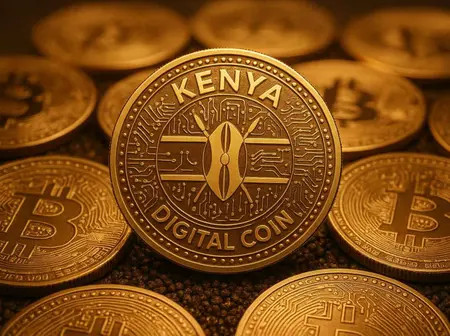Kenya is gearing up to roll out a national digital coin, a move that could position it as a leader in Africa’s fintech transformation.
In a video shared on his official social media pages on Thursday, September 18, former Prime Minister Raila Odinga unveiled the project, calling it a bold step toward reinforcing financial systems and fostering long-term economic growth.
“As the former Prime Minister of the Republic of Kenya, I am proud to announce that we will soon launch a new digital coin, an ambitious step towards strengthening financial systems and supporting sustainable economic growth across Kenya, Africa, and the rest of the world,” announced Raila.
“Kenya is ready to embrace the future. The Kenya Token will position our nation at the forefront of Africa’s crypto revolution.”
The coin, set to operate on the Solana blockchain, is projected to fuel innovation, empower entrepreneurs, and unlock fresh economic prospects for the country’s youth.
“This initiative will empower young people who are creating opportunities to learn, trade, or invest in cryptocurrency. It would also boost innovation, entrepreneurship, and wealth creation with a growing digital economy,” Raila added.
He emphasised that the project is designed to empower young people by giving them opportunities to learn, innovate, and invest in cryptocurrency and the broader digital economy.
Raila portrayed the initiative as a continental shift, declaring that Kenya is ready to lead Africa into the crypto era by embracing digital finance and shaping a future that’s more open to blockchain technology.
Key details — including the coin’s name, intended applications, and launch timeline — remain under wraps. However, the decision to build on Solana points to a focus on fast, affordable transactions, aligning with Kenya’s push to expand its digital infrastructure.
Digital coins are currencies that exist only in electronic form, functioning as payment methods, stores of value, or accounting units. Unlike physical money, they rely on cryptography for security and operate on computer networks.
They generally fall into two categories: cryptocurrencies like Bitcoin and Ethereum, which are decentralised and community-driven; and Central Bank Digital Currencies (CBDCs), issued and overseen by governments, such as Nigeria’s eNaira or China’s digital yuan.
Most are powered by blockchain technology — a decentralised ledger that ensures secure, transparent record-keeping while eliminating the need for intermediaries like banks, making peer-to-peer transfers seamless and borderless.
Kenya’s planned national digital coin could be a game-changer for the country’s economy and its people, especially the youth. By leveraging blockchain technology, the coin promises faster, cheaper, and more secure transactions, reducing dependence on traditional banking systems that often exclude many Kenyans. This could bring millions of unbanked citizens into the financial system, making it easier for them to save, trade, and access credit.
For young people, the coin opens doors to the global digital economy. It creates opportunities to learn about cryptocurrency, invest in blockchain-driven ventures, and build businesses that tap into a growing fintech ecosystem. Entrepreneurs could benefit from lower transaction costs, improved access to capital, and wider markets beyond Kenya’s borders.
At a national level, the coin could strengthen financial systems by promoting transparency and reducing corruption through traceable transactions. It also positions Kenya as a continental leader in digital finance, potentially attracting international investment and innovation.
Choosing Solana signals a focus on scalability and affordability — essential for a developing economy. If managed well, the digital coin could not only modernise Kenya’s financial sector but also spark a new era of inclusion, entrepreneurship, and economic growth.

Leave a Reply